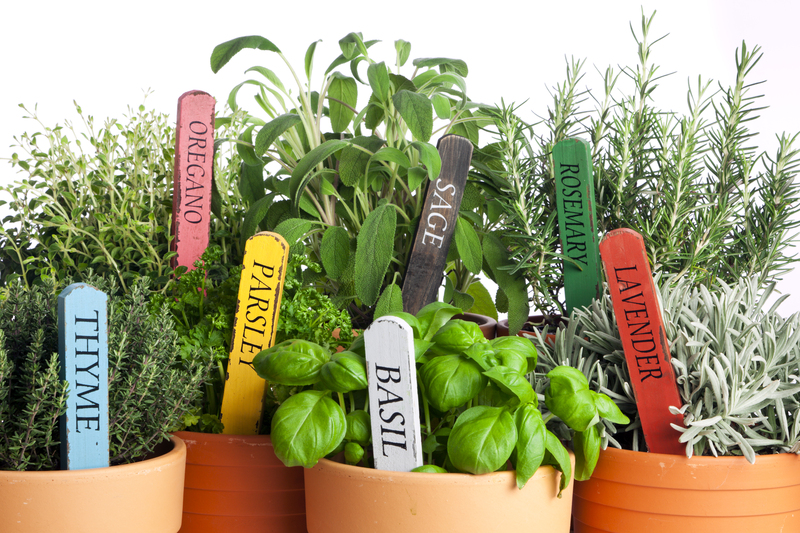From Overlooked to Blooming: A Garden Revival Guide
Posted on 04/09/2025
From Overlooked to Blooming: A Garden Revival Guide
Is your garden feeling more like a neglected patch of weeds than a blossoming oasis? Has your backyard lost its charm, and does your front garden look like it's given up on life? If you're nodding yes, you're in the right place. Reviving an overlooked garden is not just about planting a few flowers--it's a transformative journey that revitalizes your outdoor space and brings a sense of achievement and peace.
In this comprehensive guide, we'll take you step-by-step from neglected to blooming. You'll find everything you need to turn your garden around, from planning and clearing, to ongoing care and enjoying the fruits of your labor. Welcome to your ultimate Garden Revival Guide!
Why Bother With a Garden Revival?
A revitalized garden offers more than just curb appeal. Benefits include:
- Boosted property value--a well-maintained garden can add up to 20% to your home's value.
- *Mental health benefits*--gardening reduces stress and provides a sense of accomplishment.
- Wildlife habitat--healthy gardens attract pollinators and birds.
- Outdoor space for relaxation, play, and entertaining friends or family.

Step 1: Assess and Plan--The Cornerstones of a Successful Garden Makeover
Perform a Thorough Assessment
Begin your garden revival by carefully evaluating your current space. Walk around with a notepad or smartphone and make notes on:
- Which areas have overgrown weeds?
- Where are there bare or patchy spots?
- Are any plants diseased or dying?
- What hardscape (paths, patios, fences) needs repair or replacement?
Craft a Realistic Garden Makeover Plan
Now that you know what you're dealing with, ask yourself:
- What is your budget and how much time can you commit?
- What is your gardening skill level?
- What do you want to use your garden for? (e.g., relaxation, growing food, attracting wildlife, entertaining)
Step 2: Clear the Clutter--The Essential Clean-Up
Remove Debris and Weeds
No garden revival guide would be complete without talking about removing the old to make way for the new. Wear gloves and use the right tools for:
- Pulling or digging out weeds (including roots!)
- Clearing fallen branches, dead leaves, and old plant material
- Removing non-biodegradable rubbish
Prune and Refresh Overgrown Plants
Many plants just need a good trim. Pruning:
- Shapes trees and shrubs for better appearance and health
- Encourages new growth and flowers
- Removes disease and prevents spread
Step 3: Improve Soil Health--The Foundation of Every Blooming Garden
Test Your Soil
Healthy soil is vital for a blooming garden revival. Take a soil sample from several areas and use a kit (available at garden centers) to test for pH and nutrients. Most plants prefer a slightly acidic to neutral pH (6.0-7.0).
Amend and Enrich
Depending on your soil test results, you may need to:
- *Add compost* or well-rotted manure to boost organic matter and microbes
- Apply lime to raise pH (if it's too acidic), or sulfur/peat moss to lower it (if overly alkaline)
- Break up compacted soil and add sand or grit to improve drainage if necessary
Step 4: Design & Replant--Bringing Life and Color Back
Choose the Right Plants
For a long-lasting garden transformation, pick plants that suit:
- Your local climate and USDA hardiness zone
- The soil type and light levels in your garden
- How much maintenance you can provide
Create Layers and Interest
Design your revived garden for beauty all year. Combine:
- Evergreens (for year-round structure)
- Flowering perennials (for summer color)
- Annuals (for quick splashes of brightness)
- Bulbs (for early spring joy)
Don't Forget the Lawn
A lush lawn can be the centerpiece of a blooming garden revival. Aerate the soil, re-seed patchy areas, and edge the borders for a fresh, tidy look.
Step 5: Hardscape Enhancements--Paths, Patios, and More
Repair and Upcycle
Fix uneven paving, broken fences, or wobbly gates. Consider simple upgrades:
- Repaint fences or sheds for a quick uplift
- Use reclaimed materials for rustic paths or raised beds
Add Comfort and Practicality
Why not create a zone for seating, relaxing, or outdoor dining? Add a bench, bistro set, or hammock. Solar lighting and water features not only attract wildlife but extend the enjoyment of your revived garden into the evening.
Step 6: Ongoing Maintenance--Keeping Your Garden Blooming
Develop a Sustainable Routine
A blooming garden revival thrives on regular attention:
- Water: Early morning or evening, less frequently but deeply.
- Mulch: Helps conserve moisture, suppress weeds, and feed soil as it breaks down.
- Deadhead: Remove spent blooms to encourage more flowering.
- Inspect: Check for pest outbreaks or disease before they spread.
Embrace Organic Solutions
To keep your revived garden healthy and eco-friendly:
- Use companion planting to deter pests naturally.
- Encourage beneficial insects by growing flowers such as calendula, yarrow, or dill.
- Compost garden waste to reduce landfill and enrich your soil.
Step 7: Make It Personal--Adding Your Signature Touch
Create Unique Features
What makes a garden transformation truly special? Personal touches like:
- Hand-painted pots or stepping stones
- DIY garden art or sculptures
- Hanging baskets, window boxes, or vertical gardens
Encourage Wildlife and Biodiversity
A blooming revived garden is also a sanctuary for nature. Simple additions such as:
- Nectar-rich plants for bees and butterflies
- Bird baths or feeders (kept clean to prevent disease)
- Piles of logs, stones, or leaves for insects and hedgehogs
From Overlooked to Blooming--A Garden Revival Success Story
Let's take a quick look at a real-life garden revival for inspiration:
- A small city backyard, filled with brambles and old paving slabs, was cleared and replanted.
- Compost improved the compacted clay soil.
- Native wildflowers, evergreen shrubs, and fruit bushes replaced invasive weeds.
- A bench was added beneath a new pergola entwined with climbing roses.
- The owner now enjoys morning coffee surrounded by butterflies and songbirds--a far cry from the forgotten patch of six months earlier!
Common Challenges in a Garden Revival--and How to Overcome Them
Poor Soil
Healthy, living soil takes time to develop--so keep adding compost, mulching, and minimizing disturbance. Slow-release organic fertilizers can also help.
Pest and Disease Setbacks
Inspect plants regularly. Encourage natural predators and use physical barriers or organic remedies when necessary. Avoid blanket pesticide use, as it harms beneficial insects.
Time Constraints
Not everyone can spend hours gardening. Focus on small sections at a time, choose low-maintenance plants, and automate watering where possible.
Budget Limits
A garden transformation doesn't have to be expensive. Swap cuttings with friends, grow from seed, repurpose household items as planters, or visit local plant swaps.

Tips to Keep Your Revived Garden in Full Bloom
- Seasonal tasks: Stay ahead of the calendar--plant bulbs in autumn, prune in winter, sow seeds in spring, and deadhead in summer.
- Regular weeding: A few minutes a week prevents big problems later.
- Fertilize judiciously: Too much can be as bad as too little.
- Monitor weather: Protect delicate plants from frost or excessive heat.
- Celebrate your progress: Take time to relax and appreciate your hard work.
Conclusion: Start Your Journey from Overlooked to Blooming
Whether your challenge is a weed-choked lawn, a forgotten border, or a backyard that's lost its sparkle, reviving your garden is a rewarding and achievable goal. With a thoughtful approach to clearance, soil, planting, hardscape, and ongoing care, you can transform any neglected space into a garden that blooms all year round.
Let your garden revival journey begin today--create a sanctuary where you and nature can thrive, one step, seed, and season at a time. Happy gardening!

